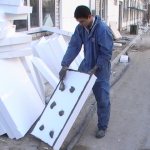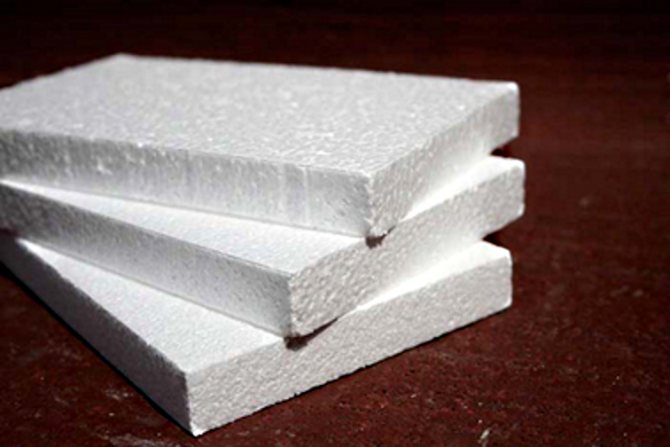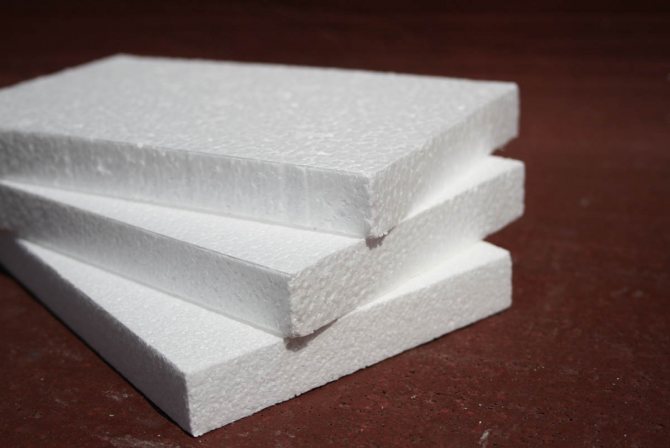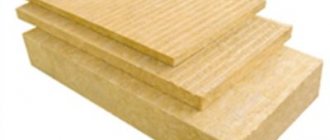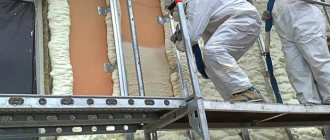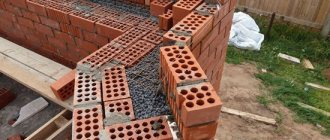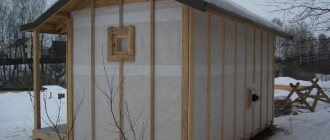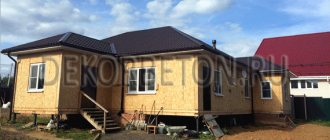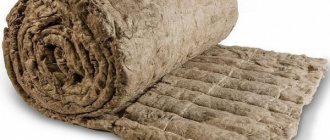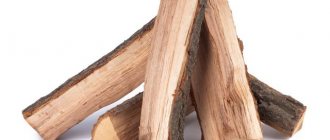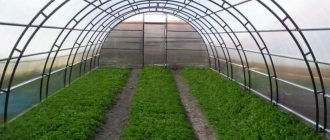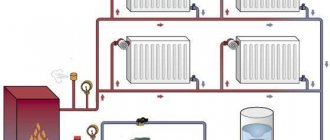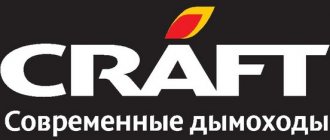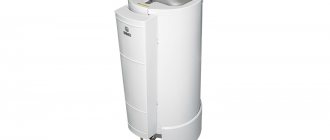In this material: the pros and cons of expanded polystyrene. Simple, detailed and understandable. Perhaps this article will change your plans for home insulation. Read and comment. At the end of the article - reader poll.
Interested in Styrofoam? Have you decided to use it to decorate your home? Then now we will tell you what the advantages and disadvantages of expanded polystyrene.
We will consider mainly using the example of a conventional PSB-S. Let's start with the pros and then move on to the cons of this material. We will tell you absolutely everything, without hiding anything. By the way, according to
Benefits of Styrofoam (Styrofoam)
Low price
Perhaps this is the most important plus of this material as insulation. Now there are many other heaters on the market that are superior to foam in a number of properties. However, in many cases, it is the cost of insulation that is of paramount importance. As a result, in many cases, the choice falls on the foam. The amount of money that can be saved thanks to the use of this material is very attractive.
Good thermal insulation
This is also an important advantage of expanded polystyrene. In terms of its thermal insulation performance, it surpasses most other heaters. Due to this, when using foam, you can get by with the smallest thickness of insulation. Whereas when using other materials, their thickness (to achieve the same thermal insulation value) can be many times greater.
The following feature is closely related to this.
Light weight
It is a very light material (thanks to its manufacturing technology). And due to this (as well as high thermal insulation properties), for example, when insulating a house, a minimum load is created on the foundation and walls.
This is also an important advantage of foam. It acquires particular importance when insulating multi-storey buildings. There are many floors, but the foundation is one!
Multifunctionality and wide range of applications
This material is used to insulate a wide variety of objects. So, if we talk about houses, then it is used to insulate walls, basements, floors, ceilings.
At the same time, there are several options for insulating certain objects.
This feature makes expanded polystyrene almost universal insulation. The exception is insulation of the house from the inside - it is better not to use foam for this.
Durability
The service life is really quite high. This has already been tested in practice. Of course, provided that this material is protected from exposure to sunlight, rodents and other negative factors.
Subject to the appropriate insulation technology, this material can last 30 years or more. Moreover, if you use high-quality foam, from honest manufacturers.
It is no secret that now on the market there is also low-grade material, which is made without observing all the necessary standards. In this case, of course, there is no need to talk about high durability.
However, if we take into account high-quality expanded polystyrene, then its service life is quite high. According to this indicator, it surpasses some other heaters.
High resistance against fungi, various microorganisms
Another good thing about styrofoam is that it is of artificial origin. This means that it certainly does not attract any microorganisms. That is, they do not start in it and do not multiply, as in the same wood. And, for example, from mold, which will be located in the immediate vicinity, the foam will not collapse.
Another plus for this insulation.
Ease of installation
Any builder who has ever worked with expanded polystyrene will say that it is easy to work with it. This material is easily cut, adjusted to the required shapes and sizes. For example, insulating the walls of a house from the outside with the help of polystyrene foam is simple and quick. What can not be said about some other types of insulation.
However, this is where the advantages of expanded polystyrene end. And now we proceed to consider the cons - the disadvantages of foam. Unfortunately, there are not so few of them.
We emphasize right away: we are not manufacturers of expanded polystyrene. Therefore, we will tell you the whole truth, without hiding anything.
So…
Expanded polystyrene (penoplex)
Extruded polystyrene foam is produced by extrusion, the method forces the polymer to first melt, after which a viscous mass is formed. From the solid state granules turn into viscous-viscous, as a result of which a single liquid-phase substance with a solid and durable microstructure is obtained.
Extruded polystyrene foam looks like a mass of closed cells, inside which there is gas, it is much stronger than foam. Polystyrene foam cells are impermeable, they do not have micropores, like foam plastic, so water or gas cannot penetrate into the cells. The cells of expanded polystyrene look like a solid mass, air or water can penetrate only from the cut side of the side surfaces. In general condition, the material cannot absorb moisture, steam and much more from the outside.
We often call expanded polystyrene foam polystyrene, since the domestic brand of extruded polystyrene foam is produced with this name, in fact, they are the same thermal insulation material... The polispen brand is also widespread, it is used in various industries: agriculture, in the construction of runways, when laying oil and gas pipelines, with it they make a heat-insulating layer in civil and industrial building structures.
Since the moment of mass production, penoplex has become widely used in construction as a high-strength heat-insulating material. It is always used for work outside, since it is not suitable for internal insulation, polystyrene foam at high temperatures can release styrene. Main characteristics material are:
- Increased compressive and fold strength.
- High density foam.
- Does not crumble, unlike styrofoam.
- Thermal conductivity 0.028 W / m K.
- It absorbs moisture no more than 3% of its mass, this indicator does not affect its thermal insulation, strength and structure.
- Has excellent sound insulation.
- Penoplex is not afraid of insects and rodents.
- Does not rot and burns poorly.
Disadvantages of Styrofoam
Gives off toxic substances when burned
We will not delve into chemical processes now. Let's just say that these substances are very toxic and dangerous.
By the way, some manufacturers hide this fact in every possible way. On the Internet, you can even find fairy tales that say:
"Foam plastic, when burning, emits no more harmful substances than ordinary wood ..."
Know: it is not true!
Since ancient times, people have been frying meat, vegetables, and other foods at the stake. At the same time, they sat near the fire, warmed themselves.
And in the case of polystyrene ... this even in a nightmare will not be dreamed of! When burning, very life-threatening substances are released. How can this material be equated with wood in terms of harmfulness?
There are many cases when people were poisoned precisely by gases that were released during the combustion of expanded polystyrene. There are also tragic cases (Google and Yandex will help you).
Therefore, it is strongly We do NOT advise you to use this material indoors.... Consider the high fire hazard. Electrical wiring, household appliances on fire ... Anything can happen. After all, even a small fire of the foam is enough for hazardous substances to be released.Why do you need this?
If you have already decided, for example, to insulate the house with this material, then do it only outside. Do not insulate from the inside under any circumstances!
And even if you insulate the house from the outside, be sure to protect the foam from accidental fire. Take care not only of your health, but also of the health of the people around you.
Does all foam burn the same?
Not. There is ordinary foam, which, on contact with fire, is highly flammable and continues to burn, even on its own.
And there is self-extinguishing polystyrene foam that does not support combustion (a favorite phrase of many foam manufacturers). They say, "does not support combustion, self-extinguishes, so this material is not dangerous."
Yes, self-extinguishing foam will not burn by itself. However, if there are other materials nearby that will support combustion well (for example, wood), then self-extinguishing will do nothing. Such expanded polystyrene under the influence of a third-party fire will continue to burn and still emit harmful, toxic substances.
Moreover, there is an important point! Not every self-extinguishing foam can actually be self-extinguishing... The fact is that now on the market there are many low-grade materials made with large deviations from technological standards.
In other words, the packaging may say that the material is self-extinguishing, but in fact this is not so. Such foam can burn well by itself. Cheating consumers!
Therefore, always ask for a quality certificate when buying, give preference only to reliable, trusted manufacturers.
Release of harmful substances even at low temperatures
It should be borne in mind that over time, expanded polystyrene (especially low-grade) is able to emit into the atmosphere a considerable amount of a harmful substance - styrene. This is especially true in rooms where the air is intensely heated (for example, a kitchen, a bathhouse).
Therefore, remember: no insulation inside the premises! And we do not advise you to glue any decorative polystyrene foam plates to the ceiling. Think about your health and the health of your children!
Creates a vapor barrier
As you know, water vapor accumulates in rooms over time, which tends to go outside (to the street). As they accumulate, the vapors go up and to the sides, trying to get through the walls and ceiling of the building. And, as they say, if “the walls and ceiling are breathing”, then everything will be in order - water vapor will gradually come out without creating dampness in the house.
But if on the way there is material that does not let steam through (or does, but it is bad), then the situation will be different. This will lead to the fact that water vapor cannot escape from the room to the outside normally. Because of this, it will be damp, windows will be covered with condensation, mold, unpleasant odors, etc. may appear. In a word, the indoor climate will worsen.
So ... polystyrene is just such a material that creates a vapor barrier - it prevents the removal of water vapor to the outside. This will be especially noticeable if, for example, not only the walls, but also the ceiling are insulated with this material.
Yes, some say that supposedly foam plastic (for example, PSB-S) has normal vapor permeability, sufficient to remove steam. However, in practice, as a rule, it turns out differently.
So, if we compare the characteristics of a wall made of red brick with those of such a foam, then the vapor permeability of the second will be noticeably lower - 0.11 versus 0.05 Mg / (m * h * Pa).
Not to mention the extruded polystyrene foam, which creates almost zero vapor permeability. In fact, only reinforced concrete can be insulated with such a material, which also practically does not allow steam to pass through - 0.03 Mg / (m * h * Pa).
Ideally, if the wall consists of several materials, then the vapor permeability in the direction from the inside to the outside should increase, or at least remain the same. And if in some place there is a sharp decrease in the vapor permeability index, this inevitably leads to the accumulation of moisture in the thickness of the wall. Over time, this moisture will negatively affect the indoor climate. Likewise with the ceiling.
Is it possible to somehow deal with this lack of foam?
Yes, you can. To do this, you need to provide a high-quality ventilation system in the house. And this - additional costs, and considerable.
Hygroscopicity
This is the property of the material to absorb moisture. Of course, in terms of hygroscopicity, expanded polystyrene is better than many other heaters. For example, it absorbs much less moisture than mineral wool. Nevertheless, being in water, the foam (normal) will take on some of the moisture.
Therefore, as a rule, it is better to use extruded polystyrene foam for insulation and warming of damp rooms.
Afraid of the sun's rays
This material is destroyed by ultraviolet radiation. And pretty quickly.
This must be taken into account, both during storage and during its direct use. For example, after cladding the walls of a house, you need to cover the insulation with a protective layer of glue and plaster as soon as possible. The sun's rays should not be allowed to fall on the foam for months. Otherwise, its surface will be strongly destroyed (it will begin to turn yellow and crumble).
Whole until the mice got there
Mice gnaw on styrofoam, and very actively (we wrote about this earlier). If the rodents get to him - "write wasted." There will be a hole in the hole. Mice make holes in this material, equip nests for breeding. Apparently, rodents like that it is warm and easy to chew on.
Not resistant to solvents
This also needs to be taken into account. When any solvents hit the surface of expanded polystyrene, it begins to disintegrate almost instantly. It seems to dissolve, melts from their action.
Therefore, if it is necessary to paint this material, the choice of paint must be taken seriously. You can only use such paints and varnishes in which there are no solvents. No white spirits or solvents!
Low resistance against mechanical damage
This is not to say that this is a big drawback of foam. However, it is there. Do not say, but this material has low strength, easily destroyed by mechanical stress. This manifests itself not only during installation, but also, for example, during transportation. It is not uncommon to see sheets with uneven edges (chips are present).
Of course, this parameter directly depends on the density of the foam. The higher it is, the greater the strength. Nevertheless, whatever one may say, the material needs additional protection.
Where styrofoam can be used. Its main characteristics
The main task of this thermal insulation material is to make sure that the heat does not escape from the living quarters. Since this is an airtight material that works on the principle of a "thermos", the required temperature will always be maintained in the house: it is warm in winter, and heat will not penetrate into the living quarters in summer.
Polyfoam is a common material that is widely used in the construction of residential and non-residential buildings. With the help of this material, they insulate:
- ceilings;
- attics;
- floors;
- walls;
- foundation.
The walls are insulated with foam plastic both inside and outside the building. However, not all builders consider it correct to use it for walls that face the street. This is justified by the fact that the wall must necessarily warm up precisely due to the heating inside the building.
In the same wall, on the outside of which the foam is laid, the "wrong" thermal insulation can pass.
In this case, moisture can saturate the wall, and at low air temperatures, it will freeze, which will lead not only to a violation of thermal insulation, but also to the gradual destruction of the wall.
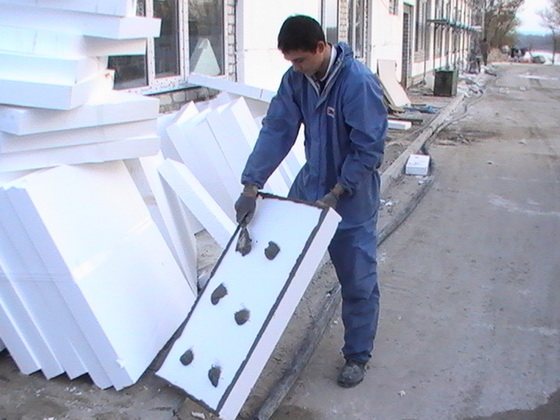
Pros and cons of polystyrene: draw conclusions
As you can see, there are more disadvantages than advantages. However, we promised you that we would tell the whole truth without hiding anything. We have fulfilled our promise.
And to use this material for your purposes or not is up to you, of course. Anyway, now you know about all the pros and cons of Styrofoam. This means that you will make the right choice.
The general conclusion can be made as follows.
Yes, expanded polystyrene has high thermal insulation characteristics, an attractive price and other advantages. However, one must also take into account the risks and threats to health that this material is capable of carrying. And the expediency of using foam must be considered in each case separately.
And now the poll. Tell us what you think of this material.
Interview
Should you use polystyrene as insulation for your home?
Also write your opinion in the comments.
Make the right choice. Equip yourself wisely!
Vyborstm.ru
General information about Styrofoam
- Polyfoam belongs to the family of polystyrene heaters, has a low degree of thermal conductivity, which makes it more attractive to consumers in relation to other heaters.
- Floor structures equipped with this material are an excellent barrier to moisture penetration from the outside.
- Due to its low weight, the use of the material does not require strengthening the foundation or interfloor floors.
- In addition, it expands the scope of the foam plastic: facades, plinths, basements, ceilings.
Technical benefits at a glance
There are a number of factors by which it can be unambiguously concluded that foam is an ideal insulation material.
- It provides a simultaneous solution to such problems: it helps to retain heat and prevents moisture and steam from entering through the base.
- Inhabitants of the first floors in apartment buildings and owners of private houses with large underground premises are especially in need of hydro and vapor barrier.
- The structure of the foam has a unique ability to repel moisture in all its manifestations.
- Moisture is an ideal conductor of heat, but it cannot penetrate inside the foam, therefore it is more suitable than others for insulating damp rooms without creating an additional waterproofing layer.
Interesting! Due to its special structure, the foam has high buoyancy, therefore it is actively used to create lifebuoys, floating platforms in pools and reservoirs, life jackets and other water accessories that make it possible to protect human life.
Thermal insulation of the floor with polystyrene, among other things, gives the base additional rigidity, since one square meter is able to withstand a load of more than 400 kg, which for most heaters is a "heavy" figure. This allows you to make a concrete screed over the foam, but we'll talk about this below.
The safety indicators of polystyrene allow homeowners to combine it with electric and water systems for underfloor heating. Also Styrofoam:
- reacts absolutely calmly to temperature fluctuations;
- does not swell when exposed to a humid environment;
- inert to biological corrosion;
- not afraid of the effects of chemically active compounds.
Installation is quick and easy, the slabs can be easily cut to size, which allows you to equip small segments of the floor. Polyfoam can be used to insulate floors of different geometric areas, but its most important advantage is its relatively low cost. This "nuance" makes this material available to everyone who wants to effectively and inexpensively insulate their home.
Subtleties of foam insulation
Plain and extruded polystyrene foam is a non-capricious material. Despite the low thermal conductivity, low water absorption (in extruded polystyrene foam, it tends to zero), a small specific weight and ease of installation, to insulate walls with foam plastic, their almost perfect evenness is required. The material is demanding on the quality of the base, since its strength is low. Therefore, the technology of wall insulation with foam plastic consists of several stages:
Preparation of the base Thermal insulation with foam foam Finishing
- Preparation of the base.
- Insulation preparation.
- Insulation itself.
- Installation of false walls.
- Finishing finish.
Foam plaster
The insulated wall is rolled with a needle roller, the glue mixture, which was used for gluing the insulation plates, is sealed with water, it is applied with a thick layer on the foam. To keep the plaster well, use fiberglass mesh reinforcement. It is immersed in an adhesive solution. Excess protruding through the cells is leveled and allowed to dry. After that, the surface is plastered with the usual composition and rubbed to perfect evenness. When the plaster is dry, you can start working with the bark beetle.
Features of the choice of foam
Now everything that is possible is insulated with polystyrene (it would be more correct to say: I want to). Even entire houses are built from a hybrid of OSB with foam. As you might guess, I'm talking about SIP panels. But there is one ambush here that no seller of such houses will tell any buyer about: the quality of the foam is often very low. This is because foam production is cheap and affordable. Manufacturers produce materials (this applies not to foam plastic alone, but to any product in general) not according to GOST (state standard), but according to TU (technical conditions developed by the manufacturer himself, and what he enters into these conditions, he will release).
Let's compare two photos of Styrofoam:
In the first photo, the foam has polygonal granules. Due to this, they fit snugly together. And in the second photo, the granules are in the form of balls, which is why they cannot adhere tightly to each other, there are pores between the granules. Such foam is vapor-permeable! But it is not blown by the wind. That is, steam penetrates inside the foam, but is not drawn out by any drafts, and water accumulates in it. Frost hit - the water froze, the frost released - the water melted, during the winter there will be many such cycles, and even more in a few years. As a result, after 5 ... 10 years, the wall made of such foam crumbles into separate balls. And in the dampness, toxins and fungi develop and go inside the room. In general, these foams require waterproofing.

